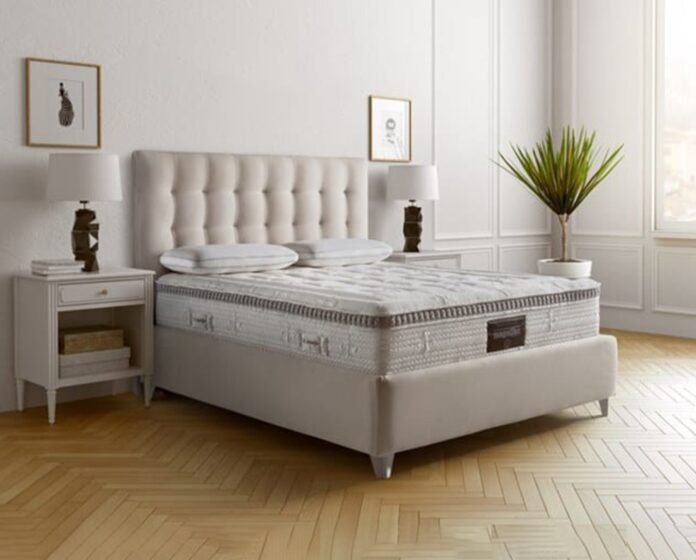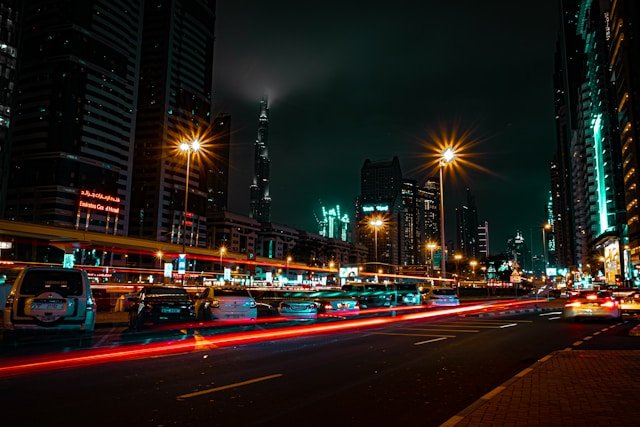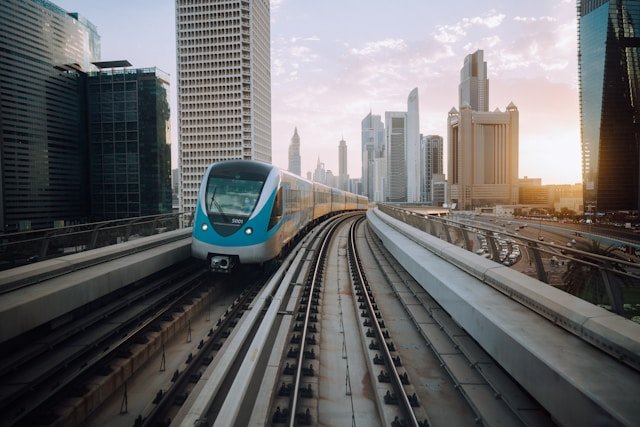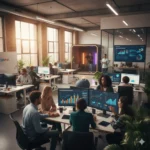Intro: Love Said-Why Valentine Wishes Matter
The atmosphere is all about love on Valentine’s Day of all days, where hearts flutter in celebration, and even the most love-shy person shyly smiles while typing “Happy Valentine’s Day ️”.
Very few occasions provide one with the tireless expression in front of one’s partner. Whether it’s the first or the tenth Valentine that will be shared together, it is but natural that the message must sound honest, romantic, and truly from the heart.
So the above was the reason why Valentine wishes are important. A few good words from a little love-locked corner of your heart can put stars in their eyes and reel in a romance that has that very special someone sinking in clouds.
So grab this guide with any expression you may ever want to have in place, from romantic to witty, poetic to playful; everything is put together in one place under the 2025 heart-healing Valentine’s Day wish list.
History of Valentine’s Day: A Brief Look into the Occasion
Before we onward go into the wishes, let’s take a step back and peek into history: What is the origin of Valentine’s Day and what do we celebrate it for?
According to legend, Valentine, a Roman priest, was said to have perforated the command of Emperor Claudius II when he wed soldiers. He was said to secretly marry couples and would marry in a rather clandestine manner; hence he was beheaded on the 14th of February, and from that moment, the day was named after him.
By the 14th century, it was celebrated as a day for lovers in most parts of England and France. Today, it is a worldwide event to celebrate lovers, extending their reach to friends, family, and self.
Statista asserted that approximately 250 million Valentine cards are sent in a year all around the globe. This is the second largest occasion after Christmas when cards are sent. Fast forward to 2025, and it is still alive like never before-kind of, with the added ‘modern twist’ that many of those”cards” are now e-cards.
Why Valentine’s Day Wishes Matter More Than Gifts
So great- roses and chocolate are there. But words? They were something more important!
A heartfelt message survives long after the flowers have wilted and the sweets eaten. It carries the thought, effort, and emotion-the things you cannot buy.
And such is the importance of Valentine wishes:
It personalizes the expression of love. A wish states everything about what you wish to say to your partner-back with no bias, not one question.
It builds connection. Love declared creates ones’ emotional intimacy.
It is longer lasting than gifts. One can cherish a message saved on the phone or inscribed on a card forever.
It is valid for any relationship. Romantic, platonic, or family-the love-dripping messages go anywhere.
And we are about to send some lovey-dovey, heartfelt, and creative Valentine’s wishes your way.
Romantic Valentine’s Messages for Your Love
All words sound like verses when you’re in love; however, formulating the right one is Herculean. So if you are being sky-high romantic or genuinely sincere or maybe with a touch of mischief, these are some lines to bring back your muse.
Messages for Lover
“Happy Valentine’s Day, my love; you are my yesterday’s forever!”
“Our love story might not be the best, but it is in my book; I am the luckiest to have you by my side.”
“My sunshine on a cloudy day; you are my warmth on a cold, stormy night!”
“I love you beyond words-as I can try yet again with all the words every Valentine.”
Messages for Boyfriend
“Happy Valentine’s Day to my husband-I am so grateful you are alive for the whole dimension of my day.”
“I am forever grateful you have been my best friend, my partner, my Valentine-all those same things.”
“I fall for you, again and again at every heartbeat.”
“Nothing can complete me as beautiful as you have, seriously. That is how deeply I love you.”
Messages for New Relationships
“This Valentine’s feels special in ways that unpredictably include you!”
“I still can’t believe you are mine! Happy Valentine’s!”
“For new love, laughter, new adventures.”
Cute and Funny Valentine Messages
A little laughter is good for my love.
Funny-Text Valentine Messages
“You are my one and only, you are welcome! Now, can you please return my heart?”
“Happy Valentine’s Day! So, are you capable of accepting me as your Valentine or not? I find it funny that you are already well aware of what you agreed to by landing me in as well.”
“Roses are red, violets are blue, I suck at poems, but still can’t help loving you!”
“You’re the peanut butter to my jelly-and I never want to be done with our snacky love.”
Cute Valentine’s Day Wishes
“My favorite notification is ‘From You!'”
“I love you more than pizza-which is saying a lot!”
“Our love is stronger than Wi-Fi.”
Messages for Friends on Valentine’s
No friends, no real celebration of Valentine’s!
Happiness to Best Friends
“Happy Valentine’s Day; thanks for knowing me better than anyone else.”
“Love doesn’t have to be romantic to be real-you are living proof of that.”
“Keep making my days love and fun as well.”
for close friends
“Happy valentines day! I owe you everything that I am.”
“I believe Galentine’s Day should be instituted for relationships, like ours.😂”
“Love you, my favorite human! Have a day that is as amazing as you are.”
Family Valentine Wishes
Valentines are really another recognizable holiday worth remembering special people who have showcased their love for you from the moment they understood what giving love means.
For Parents
“Happy Valentine’s Day! Thank you both for teaching me what love is. The early mornings, the years, and the tears and joys with you both have all been such a splendid journey.”
“Thank you for showing me, truly, how to be patient; how to be kind; how to suffer; how to stand the tests of time.”
For Siblings
“Happy Valentine’s Day to my first best friend and perpetual partner in crime.”
“Now that’s quite something considering how much madness you put me through at times! ”
For Kids:
“Every hug must raise a weary spirit from sleep, Lol! The days are long because they are grey without you. God bless you, my little angel.
“Wishing the sweetest Valentine’s Day there ever was for my little-frame, something dear God blessed my life with!”
Valentine Wishes for Long-Distance Relationships
True love strains distance, making itself so much stronger. That’s the reason the heart will only feel alive with kind words of love when physical presence is impossible.
Heartfelt Distant Love
“My heart may be thousands of miles away from yours, but my love remains as close as ever.”
“Long may you find love waves that drown all screams of distance.”
“A beautiful Valentine’s Day you’ve wished for us: I am cherishing my moments with ease knowing that they are drawing us back together again!”
“I love you with every heartbeat and have lengthened the miles we share.”
Valentine Wishes for a Crush or Secret Love
There’s little love or valentines in this world for painful loves or secret passions. If you have someone special who loves you but knows nothing at all, whisper sweet nothings now.
Sweet and Subtle
“Happy Valentine’s Day! Just wanted you to know you make my heart smile.”
“I don’t know if you realize it but you’ve become my favorite part of every day.”
“I hope this doesn’t sound cheesy, but I really want to be your Valentine.”
Confident and Flirty
“I love being lost with you, yearning and imagining while dreaming of you.🌹”
“Let’s make this Valentine’s Day special to each other: for you and me together.”
Valentine Love Messages for Self-Appreciation
Love is anything but loving someone else; it is, likewise, about accepting the self-loving too. It’s yet another way Valentine will care for you.
Original:
Unique Methods to Convey Your Valentine’s Day Wishes
The messaging could be as important as the content.
Ideas to Make Your Wishes Extra Special
Handwritten Letter: Outdated but romantic.
Voicemail: So personal and emotional with the sound of your own voice.
Customized Video Message: Very romantic when there is distance.
Message Jar: Fill a jar with thirty little wishes or memories.
Digital Surprise: Schedule a missing heartfelt email or text to arrive just at midnight.
Remember that a very simple message would be considered really unforgettable when it happens to be gifted in a creative manner.
Pros and Cons of I Love You
True love is one of the emotions several consider it almost indescribable, but then this truth also has to bear its burden. But does one dare to undergo sweetness? Yes. Available here is the following table showing some Pros and Cons.
Pros and cons
Positive Negative
Enables emotional intimacy Risk of vulnerability
Strengthens bonds Create confusion
Create a memory forever More cheese would be nice
In this forum I talk about encouraging An emotional effort
In a nutshell:
The merits do outweigh some demerits on the balance if it is from the heart. Honest feelings shall always find a place in the hearts of people.
Valentine’s Day Trends for 2025
Valentines Day has grown up from being typically just recognizing love into advocating new trends as the year 2025 rolls through.
Cards online & AI-generated messages: Many people would actually use AI to deliver their poetic love notes, but deep down, example is the personalization that matters most.
Virtual Celebrations: A distant couple could get all excited by preparing their online dinner and movie nights.
Eco-friendly gifts: The latest trend now is going to sustainable flowers and handmade cards.
Beyond-rent love: Most popular at the moment.
Such inclusion of these trends actually, renders them a must-have.
Modern Steps on Writing Your Own Valentine Message
- If you really do want a message from your own mind, here is a simple guide for you.
- The foolproof first line would read: ‘I feel so lucky to have you…”
- Next, some memories: ‘Remember our first Valentine’s dinner?’
- Thirdly, some thanks: ‘You make every day brighter’.
- Finally, a wish or promise: ‘I can’t wait to create more memories with you.’
- Make it simpler but much more sincere and real.
A Short Valentine’s Poem You Can Use
In your eyes, I see my home,
In your smile, I lose control.
Through every season, near or far,
My heart will find where you are.❤️
Conclusion: Every Word Is Love
Valentine’s Day is not only about roses and extravagant proclamations of affection, but rather about expressing love in a way that feels right. Whether texting that special someone, surprising a friend, or reminding yourself of your own worth, words matter.
So let’s sprinkle love all over this Valentine! Write that message. Send that wish. Say ‘I love you’ in your very own beautiful way.
Love definitely doesn’t require perfect words. Instead, it needs sincere words.
Valentine’s Day has to be an act of getting through somebody’s soul by your words instead of spending an exorbitant amount of money on gifts and grand gestures. One genuine loving message can already mean much more than a thousand roses.


















